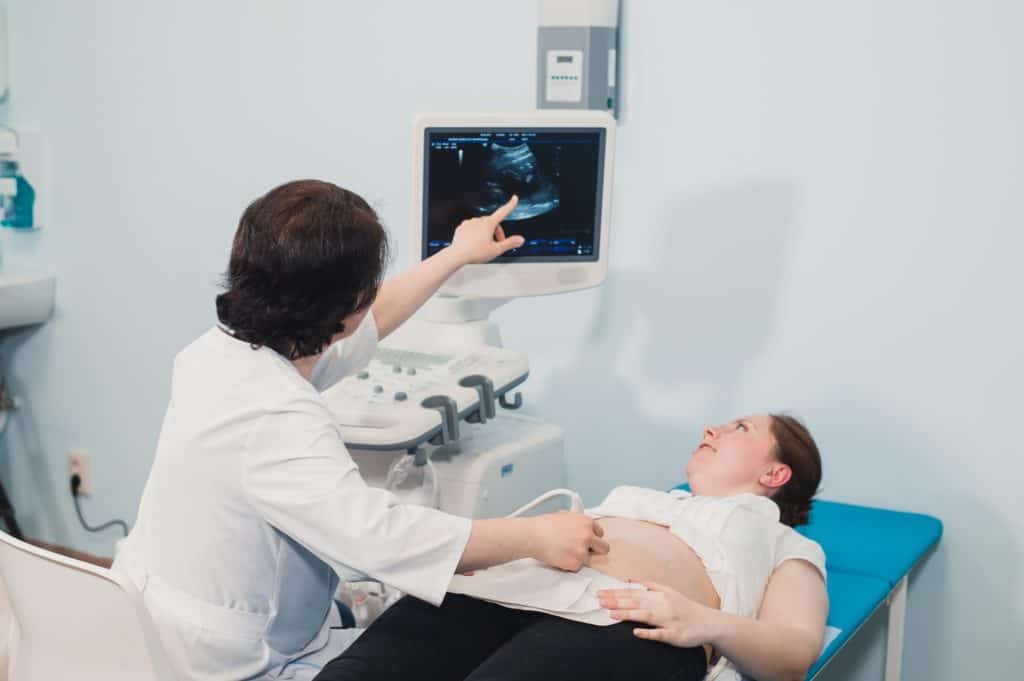My Cart(0)
What is a Breech Baby?

If you have read up on labor and delivery, you may have come across the term “breech baby”. What is a breech baby? It is when the baby is positioned with its feet down near the cervix instead of the head. This can occur throughout the entire pregnancy, but as you move closer to your delivery date this can pose problems. In this article we want to give you all the information you need to know in order to be prepared.
What is a Breech Baby?
As your baby grows, they will constantly be moving around in your uterus. And most of the time this isn’t a problem, we all need to adjust ourselves and get comfortable. But as you move closer to your due date, their moving around can cause them to get into some interesting positions. This can be a cause for concern in some cases, particularly when your baby’s head is not near the birthing canal.

Between the 32nd and 37th weeks of your pregnancy your baby should be moving into a position to prepare for birth. Their head should move towards the birthing canal, and their feet should be in the opposite direction towards the top of your uterus. If a baby doesn’t properly move into place, they can be born feet-first. And this can cause harm to the baby.
Possible Complications with a Breech Baby
Due to the nature of labor, the best position for a baby to be in for vaginal birth is with the head towards the cervix. The head is the baby’s largest part of their body, and is the most difficult to get out of the birthing canal. If the feet come out first, it becomes more difficult for the baby’s head to come out, because the birthing canal has not opened up wide enough.
Another potential problem occurs when the umbilical cord prolapses. This means that the umbilical cord is being squeezed, cutting off the baby’s oxygen and blood supply. This can cause birth defects.
Babies are more likely to be breech if:
-
They are premature
-
There is more than one baby (twins, etc.)
-
There is an abnormal level of amniotic fluid
-
The mother’s uterus is shaped abnormally
While these complications are serious, there are many ways you can try to move them into the correct position.
Can you change a Breech Baby position?
As you attend your check-ups and doctors appointments, your doctor will be checking to make sure your baby isn’t breeched. In the early stages of your pregnancy, a breech baby is not a problem. The closer you come to your due date the more likely your doctor is to suggest measures to change the baby’s position.
Non-Medical methods to change position
Acupuncture – This form of Chinese medicine involves placing tiny needles at several pressure points on the body. When stimulated this can relax the uterus, causing the baby to shift position.
Chiropractic Care – A chiropractor adjusts your posture and alignment to ensure that your hips and pelvis are aligned. This will relieve pressure off of the uterus, which can promote the baby to turn.
Child’s Pose – Another technique uses gravity as a way to persuade the baby to turn. One option is to rest in the yoga pose known as child’s pose for 10-15 minutes a day.
Pelvic tilt – Another option that uses gravity is known as a pelvic tilt. The mother rests on her back with her knees up and her feet on the ground. Then she lifts her hips up off the ground into a bridge position. The mother is supposed to maintain this pose for 15-20 minutes. Some women find this pose difficult to maintain and use an ironing board and a couch for some extra stability. They lean the ironing board against the couch and lie on it with their feet on the couch.
Music – Some babies are very fond of music. If you have noticed your baby move in the past when you play music, this might be a good option for you. Play music in the area when you want their head, and some babies will move their head to hear the music better.
Temperature – Similarly, some babies are very sensitive to temperature. By placing a warm cloth at the bottom of your stomach and a cold cloth at the top, your baby may be enticed to move toward the warmth.

Medical methods to change position
If these non-medical methods are not working for you, your doctor may suggest the use of a procedure known as External Cephalic Version (ECV). An ECV is typically had at around 37 weeks of pregnancy. It is a non-invasive procedure where the physician will apply pressure to your stomach in various areas to push the baby into the proper position. Some doctors choose to use an ultrasound also to make sure they can see the baby move into the correct position, while also monitoring their heart rate. This procedure is non-invasive, but it can be painful. Some doctors choose to administer some medication before the procedure to relax your muscles and reduce discomfort.
C-Section for Breech Baby
Sometimes, no matter what you or your doctor do, your baby will not move out of the breech position. In these cases most physicians will recommend a c-section delivery. While some breech babies are ok to be delivered through a vaginal birth, a c-section is the safer option. A clinical study conducted and published in Lancet found that a “Planned caesarean section is better than planned vaginal birth for the term fetus in the breech presentation.”
C-Section Recovery
If this happens to be the case, the baby will be safely delivered, but your recovery time may be much longer. A c-section involves a large incision across your abdomen that takes a while to heal. Movement becomes difficult and the stress of caring for your newborn is only added on top of that. Thankfully, Bellefit has developed a line of postpartum girdles that help you heal faster and help you feel more confident.

These postpartum girdles were designed with all women in mind. They come in many different sizes, shades, and types. Buy one online today and find out how so many women have healed faster and with less pain.
unsubscribe at any time without costs.










